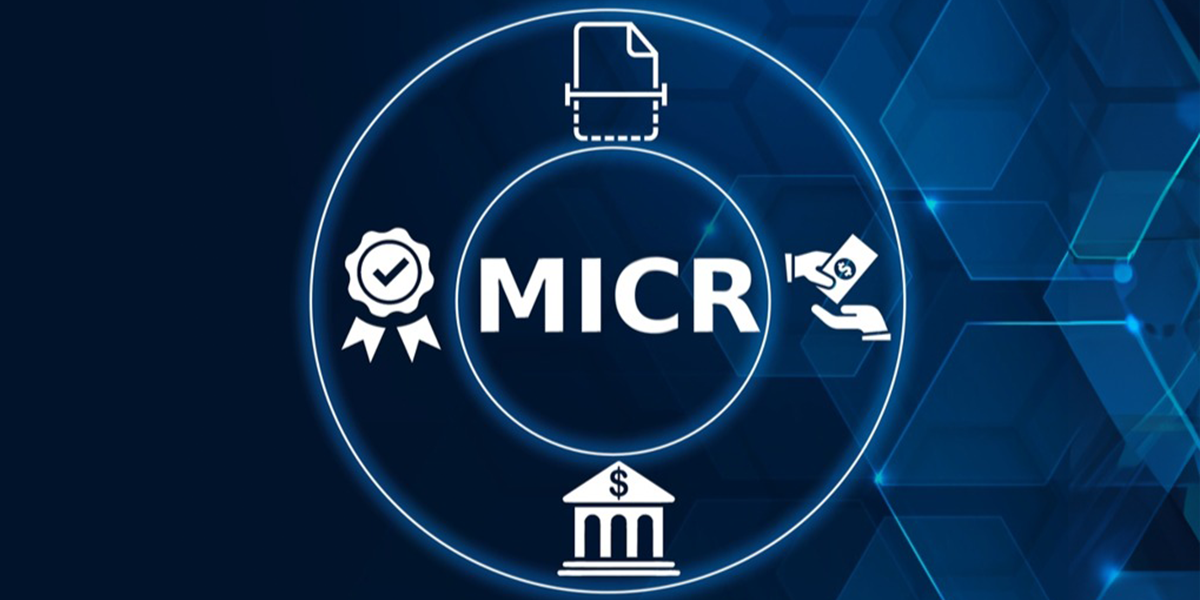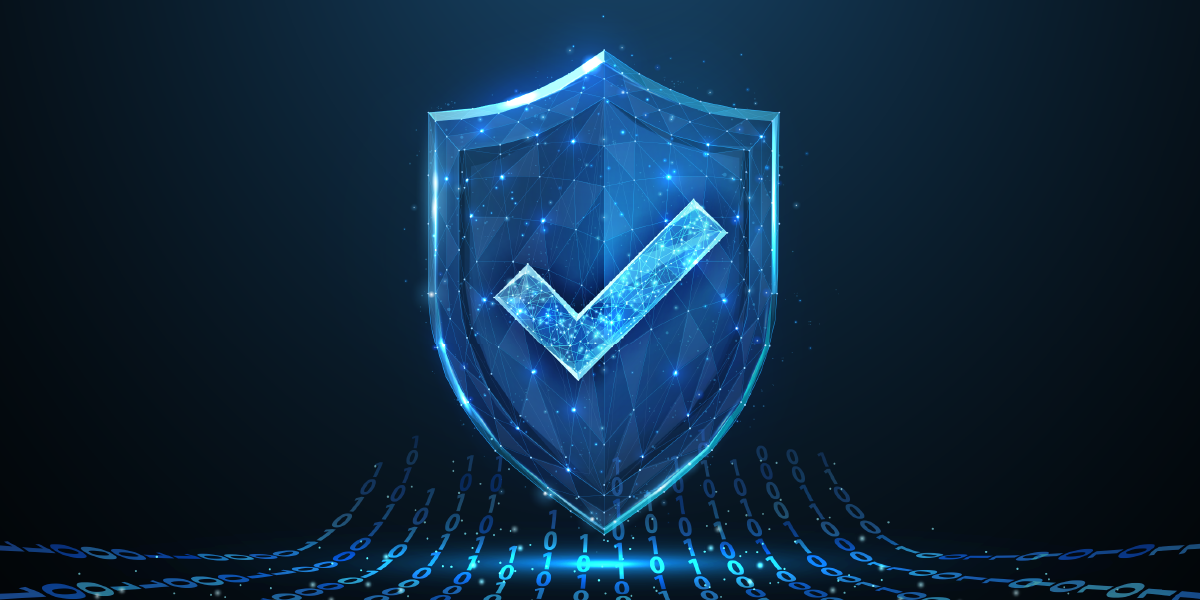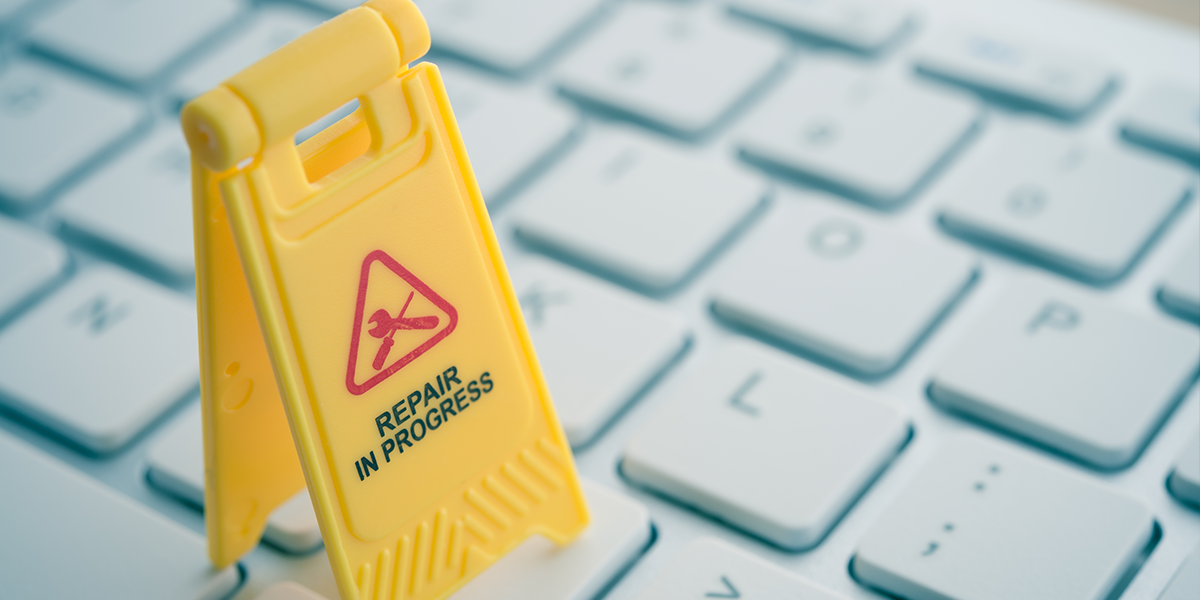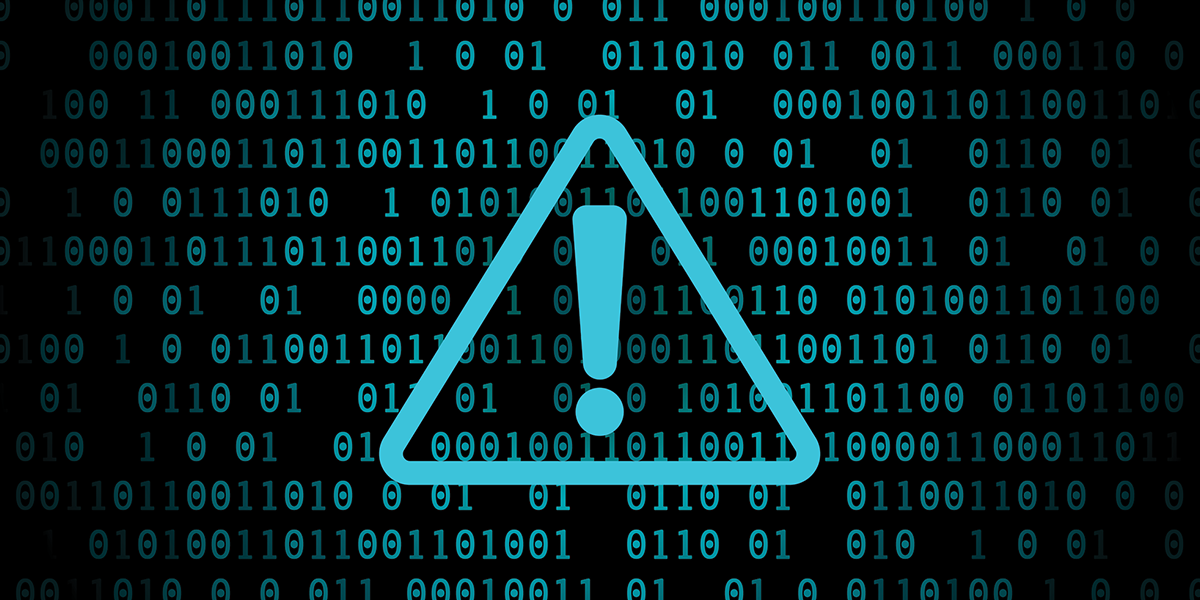Not too long ago, the author of a financial blog for Millennials asked if we could explain to her readers the purpose of the strange printing at the bottom of a check. Bankers will quickly realize that our blogger friend was talking about the MICR line, the magnetic printing that contains the account number and the bank routing number, probably the most important information on the check besides the amount. But most twentysomethings, and even many bankers, don’t know exactly how that magnetic printing is read, or the reason for its odd appearance (hint: the two are related).

The MICR line is so important that a scanner actually uses two completely separate reading methods to double-check each other. First, a metallic sensor about the size of a nickel, aptly named the MICR head, measures the magnetic signal; then the scanned image of the check is read optically and compared against the magnetic read.
If a regular camera takes pictures in 2D, you can think of a MICR head as a 1D reader that takes a linear snapshot of the check’s magnetism, similar to how a cassette player works. As illustrated below, the amount of ink in a vertical line at any given point will give off a stronger or weaker magnetic signal, and measuring that in combination with the change over time yields a wave pattern that corresponds to a number.
Why was MICR chosen?
If you think that sounds like a lot of trouble to read fewer than 20 numbers, you’ve got a point. These days, it’s easy to just point your smartphone’s camera at something, whether it’s text or a barcode, and have it instantly tell you what it is. Optical character recognition, or OCR – the official term for having a computer “read” the text in a scanned image – is nearly instant, and more accurate than ever. Why go through all the extra effort with magnets?
The reason is because it wasn’t always that easy. When electronic check clearing began in 2004, state-of-the-art OCR had about an 80 percent read rate. Even though that figure was steadily improving, and everyone could see its potential, the hard truth was that the technology just wasn’t there yet.
Turn back the clock much further, and “modern” OCR scarcely existed at all. If you were in the ‘70s or the ‘80s and you needed a way to quickly sort hundreds or even thousands of checks at a time, MICR was the only option.
Under ideal conditions, MICR yields a successful read rate in excess of 99.99%. Of course, under ideal conditions means what you’d find in a controlled environment with in-spec test documents, NOT the kind of conditions and documents that you’ll encounter in the real world. So, the actual read rate tends to be a bit lower. With the advances in computing power and machine learning over the past 20 years, the best OCR engines are not too far off from MICR read rates, either. But that’s been a relatively recent development.
Heading Backwards? Print Quality Pushes the Limits of MICR Reading
It may seem counterintuitive, but as time has gone by, check scanners have had a harder time reading the MICR line. There are two main reasons: cheaply printed checks, and self-printed checks.
What these problems have in common is that in order for the check to be read correctly, the magnetism in the printing has to be within certain acceptable limits. Magnetic ink is basically just ink with microscopic bits of iron in it; the higher the iron content, the stronger the signal. MICR printing on checks has a standard specification for ink to produce an accurate reading.
We know that the printing isn’t always going to be perfect, so we designed our scanners to recognize the same magnetic waves even when the signal is stronger or weaker than expected. But there are limits. Above about 200 percent of the standard iron concentration, the magnetic signal is so strong that the peaks go “off the charts.” Too little, and you get flatter waves that are hard to tell apart. Even though modern scanners are more sensitive and accurate than ever, past a certain point, forcing the machine to take a guess on a weak signal is more likely to result in a wrong character than a correct one.
Years ago, this was much less of an issue. You tended to order checks from your bank, or from a handful of companies that specialized in check printing. Today, you can order online from any number of sources whose quality can range from perfect to simply cheap. The result is that here in 2024, the quality of pre-printed checks is worse on average than it was in 1990 or 2000.
Another under-the-radar issue has been the proliferation of self-printed checks. These checks contain about 20 percent of the normal magnetism if done on a laser printer, or almost zero with an inkjet.
For inkjet printers, the reason is simple: Magnetic ink just isn’t available. MICR-spec ink tends to be manufactured only for commercial printing or for specialty equipment. So, inkjet-printed checks will register as having no MICR line.
In the case of laser printers, a form of magnetism is what guides the toner particles where they need to go on the paper. Toner is about 20 percent as magnetic as the ink used on checks – as it turns out, right in the danger zone. Twenty percent is just on the edge of readability, but also weak enough that many of the characters will be prone to misinterpretation.
Another issue with some self-printed checks is that the printing “misses” the target area by leaving too much space at the bottom, and so there’s nothing for the MICR head to read. This is especially prevalent with two-piece sheets where the check is a detachable part that tears off from the bottom.
Real-World Conditions Aren’t Perfect – But Make Them as Good as You Can
It's important to remember that while machine-reading technology can do some incredible things, it’s only as good as the input you’re feeding it. That’s why, when it comes to important information like account numbers, we never want to rely on a single line of defense. Double-checking each transaction can take a document that has a 1 in 10 chance of failure and turn that into 1 in 1,000 – and then to near zero when manual inspection is added as the last resort.
As always, we hope you’ve found this explanation of how your everyday equipment works to be informative – and stay safe out there!
Digital Check Corp. is the world’s largest manufacturer of desktop check scanners and is renowned for having some of the most reliable and versatile scanning equipment on the market. Their scanning products include the TellerScan series, the CheXpress series, and the SmartSource family of scanners acquired from Burroughs in 2016. Learn more about Digital Check and see how they work with IBT Apps' i2Teller software.






